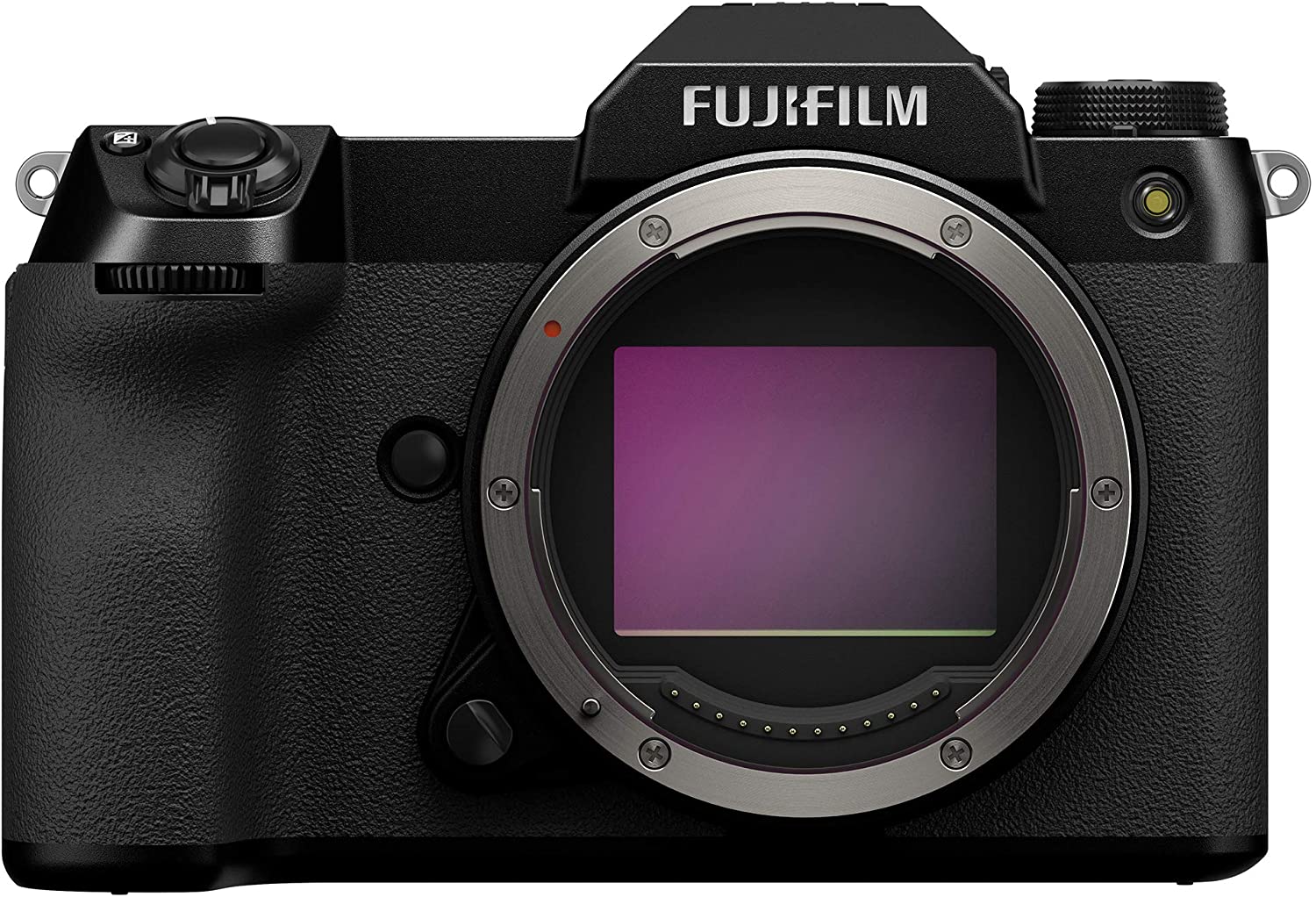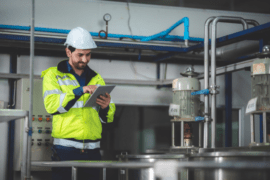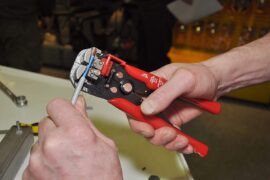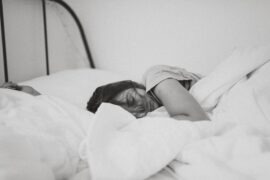Finding the right camera for portraits should be a simple task. Even phone cameras nowadays are capable enough to create stunning bokeh that will allow subjects to be more distinctive. However, nothing can beat the performance of dedicated professional digital cameras in producing breathtaking portraits.
Aside from that, professional camera models promise overwhelming sizes of sensors that can’t be compared to those in smartphones. For instance, the Sony A7R Mark IV turned heads with the release of its full-frame Exmor R CMOS sensor which comes with a staggering 61 MP resolution. Let us not forget, nonetheless, the groundbreaking 102 MP BSI-CMOS medium format sensor of Fujifilm GFX 100S which is packed in a relatively compact body. With such sizes of sensors and overwhelming resolutions, capturing even the tiniest details of the subject is possible.
The AF system also plays an important role in keeping the subject sharp and achieving that beautifully blurred background. Canon EOS R5 is probably one of the most noteworthy units that can offer the best autofocus in the market. With its Dual Pixel CMOS AF II employing 5,940 AF points, tracking movements from human to animal subjects can be an enjoyable experience.
We also considered the availability of IBIS in the selection of the best camera for portraits. In this matter, it is important to applaud Nikon’s move to finally put one in Z7 and defy its cry that lens-based Vibration Reduction technology is better.
To get more information about each of them and the other best cameras for portraits, we reviewed them with the help of our Photography Editor Evangeline Summers. Highlighting information from viewfinders to LCD to AF system, we hope to guide you with the right decision for your purchase. Also, you might want to check their best deals now on Amazon by clicking the buttons and links we prepared below.
Best Cameras for Portraits Comparison & Rating
Cameras for Portraits | Features |
2. Canon EOS R5 | |
4. Nikon Z7 | |
5. Nikon D3500 |
1. Fujifilm GFX 100S




Choosing between GFX 100S and GFX 100 could really be a challenge. Apparently, you’ll get more in the former. If you don’t mind its huge body, its battery can last up to 800 shots which is double the capacity of 100S. GFX 100 will also offer one of the best viewfinders out there: it tilts and comes with a higher resolution of 5760k dots. However, given the modern demands of capturing portraits (especially if you meant to use it for street photography), we believe GFX 100S would better suit your needs.
“You’ll lose the tilting viewfinder in 100S but generally, it is built just like other mirrorless models so handling it won’t be a challenge for anyone,” said Summers. “After all, you’ll still get the feature and software of GFX 100 and that’s the main highlight of this camera: everything packed in its compact body. Also, there’s still the handy 3.2-inch tilting touchscreen which can still be helpful in getting shots at awkward angles.”
Further, it boasts a 102 MP BSI-CMOS medium format sensor measuring 43.8 x 32.9 mm. This is the same sensor you get with GFX 100 but it is important to mention that it is situated inside a more compact body. Even better, its in-body image stabilization stays untouched. As a matter of fact, it is even improved since it now comes with 6 stops of correction while GFX 100 has 5.5 stops.
GFX 100S also introduces a new FIlm Simulation mode, the Nostalgic Neg. With this, you can recreate those “retro” aura in your shots by playing with the saturation and highlights of your stills. With this, you can give your stills that unique touch, allowing them to create stunning impressions even at first glance.
As for its AF system, it can be sufficient enough for the shooting stills. It isn’t as aggressive as the autofocus of Canon units such as EOS R5 but if you would just focus it on a single subject, locking the focus can be instant.
2. Canon EOS R5




EOS R5 is probably one of the most perfect cameras that can shoot all types of subjects. It employs Dual Pixel CMOS AF II with 5,940 AF points.
“The performance is unbeatable that finding your subjects (regardless of the movements) will bring you to tears. The way the AF locks and stays with the subject is really overwhelming; be it face, head, or eye-tracking.
“Once the camera has recognized the human subject, the focus stays where it should be even if the bride is wearing a veil or momentarily gets her face blocked with a bouquet or hands and whatsoever,” Summers said.
According to Summers, EOS R5’s AF system is one of the best in the field. It isn’t only aggressively fast, but it can also offer the best precision to assure the subject gets the emphasis it needs in the shot.
To make things better, EOS R5 can employ this same AF system to effectively capture portraits of animals even when they are moving. With just the right settings, you are ready to track even the wildest and shyest deer in the forest. That said, even wildlife photographers would appreciate its capability.
3. Sony A7R Mark IV




Sony A7R Mark IV’s 30fps frame rate in 4K is probably the only thing that hinders it from being an all-rounder unit. But if shooting stills is your main priority in a camera, A7R IV will certainly satisfy you.
It sports a 61 MP full-frame Exmor R CMOS sensor which is considered to offer the highest resolution in any Sony camera model. It also dethrones most of its full-frame competitors on the market. It can also create 240 MP stills using the Pixel Shift Multi Shooting mode that merges images.
“A7R Mark IV can produce rich, natural colors and perfect tones,” started Summers. “You will see the full potential of its 61 MP sensor with the rich details it can bring in human portrait shots. With the right lens, it can capture even the tiniest details and create a stunning bokeh that will allow the subjects to be pronounced.”
A7R Mark IV offers other good points that will benefit your portrait experience. It includes the hybrid AF consisting of 325 contrast AF points and 567 phase-detection AF points covering more than 74 percent of the frame area. This allows it to keep the important parts of your subject achieve sharp details and the background remain blurred.
“The eye-detection AF is undeniably good for human subjects,” remarked Summers. “It also offers animal eye-detect AF which, with minimal movements, can hold pretty well.”
4. Nikon Z7




Nikon Z7 is probably one of the best cameras you can have for portraits due to its excellent build and handling. Yet, it offers more than that when it comes to performance and other sections. It comes with the right equilibrium between resolution and speed, allowing it to be a gem for all kinds of photographers.
Z7 is a 45.7-megapixel mirrorless camera that has a reliable AF, thanks to the faster Expeed 6 processor and 493-point hybrid AF. What’s interesting about Z7 is that Nikon defied its ‘belief’ that its Vibration Reduction technology should just stay as a lens-based system. Now, Z7 employs an IBIS which gives it more power in the field. All of these things allow it to produce pristine stills and high-class performance, making portrait shooting more satisfying.
“There is no question what its 45.7 MP sensor and processor can do to the details of the image,” Summers started. “What will surprise you however is how this new camera could handle noise levels better.”
According to Summers, Z7 can also offer a great dynamic range, making it an excellent choice for portrait purposes.
“It can retain a huge amount of detail and even in low-light settings, it proves to deliver the best performance,” she added. “You can revive a lot of details from shadows and this is where it excels. It means a great deal if you want a portrait shot that will contain real-world details.”
Further, Summers said that the Z7 exhibits one of the best AF performances among mirrorless units. It is fast, silent, and incredibly efficient.
“The Eye AF specifically can do an incredible job in portrait shooting,” said Summers. “With this and the powerful sensor and processor, you can expect sharp subject details. This allows the subject to be pronounced and be separated from the background which, on the other hand, appears smoothly blurred.”
5. Nikon D3500
Besides being the best beginner camera, Nikon D3500 doesn’t lack the features needed to produce 5-star quality portraits.
“D3500 will give you a 24.2 MP APS-C sensor which is very reliable to get crisp images with rich tones,” Summers added, “Also, its burst rate is still great at 5 FPS given that it is an entry-level cam that is reasonably priced. So, with this bad boy, you got the most affordable, most beginner-friendly camera possible!”
The viewfinder utilizes 11 AF points (1 cross-type) which are somehow situated at the middle section of the frame. Despite this, focusing is positive, effective, and fast enough for the needs of beginners. Its Live View AF also performs pretty great and is very responsive.
However, it doesn’t have an IBIS but it can be remedied with the right Nikon lens possessing the brand’s Vibration Reduction system. With this, you can still consider it as a modest handheld unit, especially that it is pretty lightweight at only 415 grams.
Further, it is one of the best DSLR units that can offer you outrageous battery performance.
“D3500 will take more than 1,500 shots which is more than enough what you need,” said Summers. “It can last for an entire day which is something you won’t see in its mirrorless counterparts.”
Best Cameras for Portraits - Buyer's Guide
Having a high-resolution camera will assure you you’ll get the best amount of detail in your shots. Yet, to get the “quality” you need, also consider the size of the sensor. A bigger sensor will allow the camera to have a better noise handling capability, decent low-light performance, astounding dynamic range, and more.
Getting a reliable autofocus technology will help you ensure to get the sharp details of the subjects and achieve the beautiful background needed for a perfect portrait shot. Most importantly, it means less effort on your end as the camera would automatically do the job of getting the right focus for you.
If you are planning to use the camera for handheld photography shooting, you might want to get one that offers IBIS. Though you can always opt for lenses with a stabilization feature or do some techniques to prevent camera shakes, it is always better to have it in the camera body itself as it means convenience on your end.
If you are a beginner, there is no need to purchase high-end cameras for portraits. But if you intend to use it for videos as well, it is best to spend a little.
Best Cameras for Portraits - FAQs
You can always shoot images without IBIS. There are also lenses that offer stabilization features. However, having this feature in the camera body itself would ensure you would get the best shake-free images regardless of the lens you are using.
Bokeh is achieved using a wide aperture. It creates a shallow depth of field, causing the background to blur.
Yes. The bigger the size of the sensor, the better the quality of the pixels will be. It will also affect the noise level and low-light performance of the camera. It also affects the dynamic range and the overall detail and information quality of the images.
The Eye AF ensures photographers that the important aspects of the subject get proper emphasis. This will result in sharp details of the subjects.











